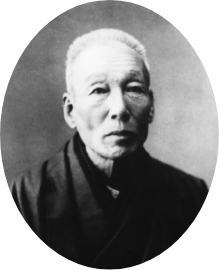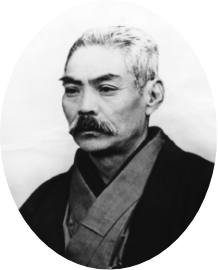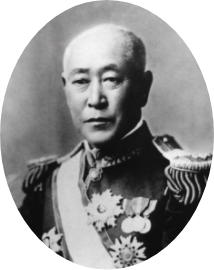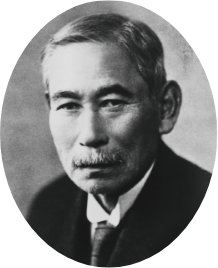HISTORY
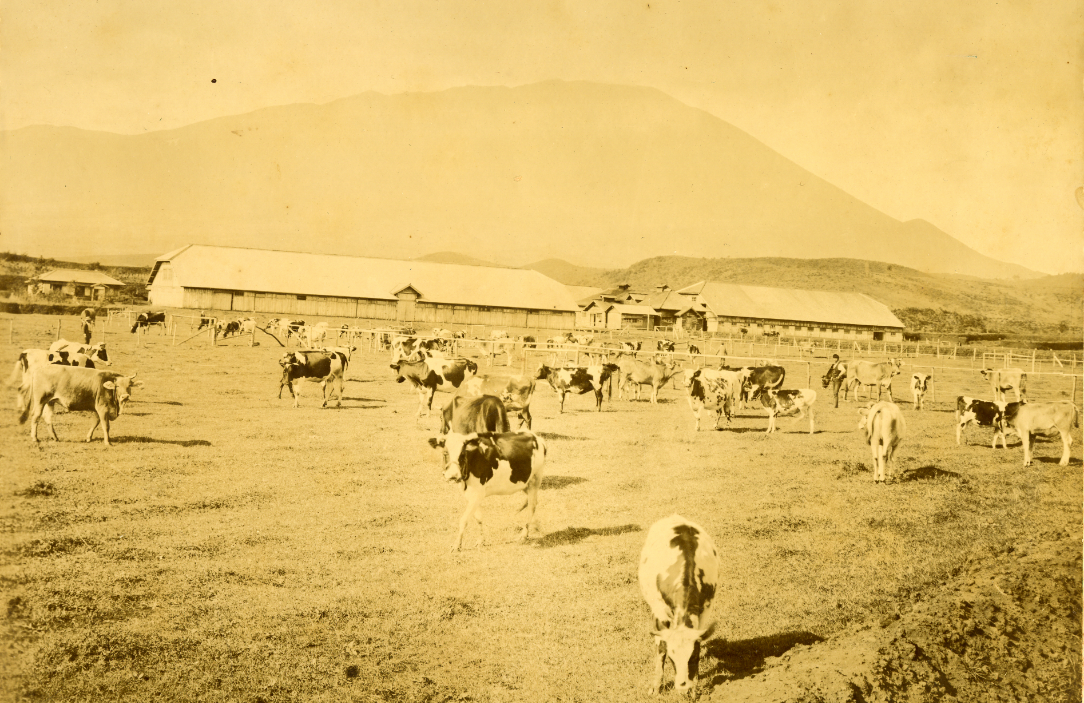
Hopes of Our Founder
1888
Mid-Meiji PeriodBarren Wilderness Extending out at the Foot of Mt. Iwate
June 12, 1888. On this day, Masaru Inoue, Director-General of the Railway Agency (the Railway Bureau at that time) for the Meiji Government, was visiting Morioka when he was captivated by the landscape extending out at the southern foot of Mt. Iwate before his eyes. The sight facing him was a barren wilderness with few trees. With a cold west wind blowing down from the Ou Mountains, Masaru looked out at this area covered in volcanic ash dotted with Chinese silver grass, brushwood, bracken, and other plants, and dreamed of something no one had ever dreamed of before: to open up a large farm in this desolate land.
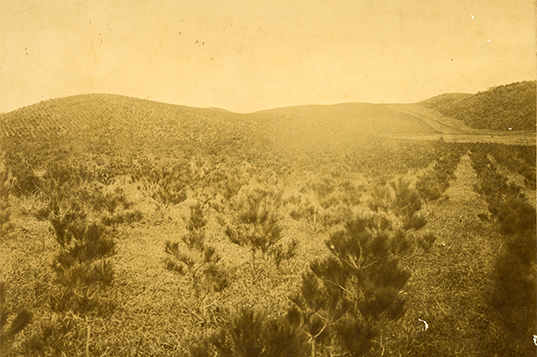
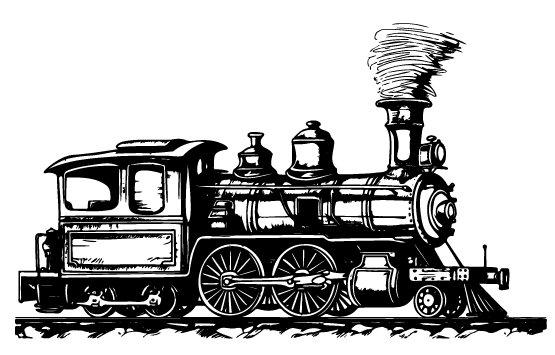
Father of the Railways
Masaru Inoue is known as the father of the railways in Japan. Along with the likes of Hirobumi Ito and Kaoru Inoue, he was one of five Choshu Domain retainers - the so-called Choshu Five – who stowed away to Great Britain during the turbulent times at the end of the Edo period. He studied modern civil engineering and mining there. After returning to Japan, he led the construction of Japan’s first railway from Shimbashi to Yokohama in 1872 as well as numerous other railway construction projects such as the Tokaido Main Line and the Tohoku Main Line. His efforts built the foundations of Japan’s railway business. His visit to Morioka was also to inspect the work to extend the Tohoku Main Line.
Hopes for a Large Farm
Standing before the wilderness extending out at the southern foot of Mt. Iwate, Masaru felt remorse for destroying numerous fertile rice fields and cultivated land while engaged in the railway construction business over many years. If such wilderness was to be left untouched, he at least wanted to cultivate it and open up a large farm to make up for damaging the beautiful rural landscape. That would be for the good of the nation and the public; he believed that was a business he should pursue. That was what Masaru thought.
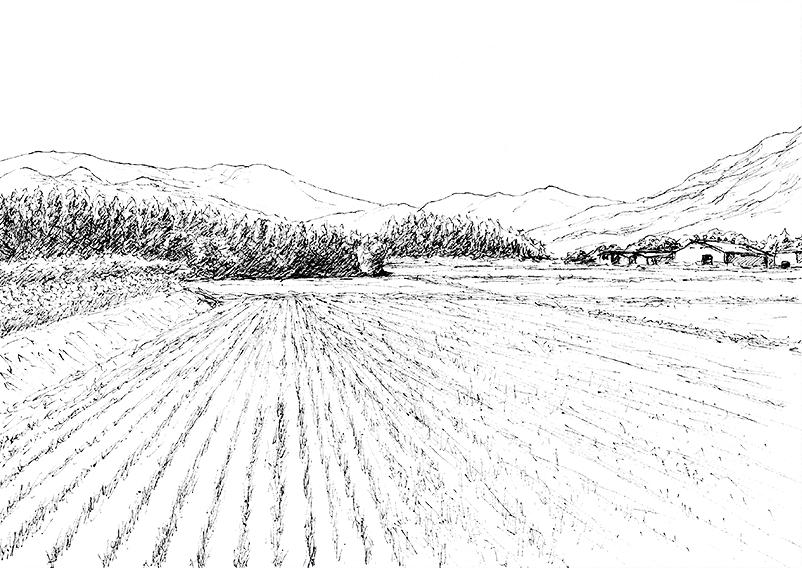
1891
Birth of Koiwai Farm
Masaru confided this idea to Gishin Ono, who had supported Mitsubishi under Yataro Iwasaki, and asked him for his assistance. At that time, after Yataro’s death, his younger brother Yanosuke Iwasaki took up the post of second President of Mitsubishi. Gishin Ono immediately introduced Masaru and Yanosuke. Impressed by Masaru’s lofty desire to open up a farm in a place of wilderness for the nation and the public, Yanosuke readily agreed to invest in the project on the spot. Thus, Masaru became the owner of the land and established Koiwai Farm on it on January 1, 1891. The name of Koiwai was created by taking one of the Japanese characters from each of the three surnames of Ono, Iwasaki and Inoue.
Cultivation of Wilderness
Windbreak Forests Protecting the Farm
When first established, Koiwai Farm was a vast wilderness. Almost no trees grew here. The poorly draining wetlands were subject to cold winds blowing in the summer and blizzards in the winter due exposure to westerly winds. This situation hindered crop growth. Koiwai Farm had to start its business from first planting windbreak forests and building embankments to protect against these winds. This afforestation would later develop into a full-scale mountain forest business to produce timber such as cedar, red pine, and larch with the aim of covering two thirds of the farm area.
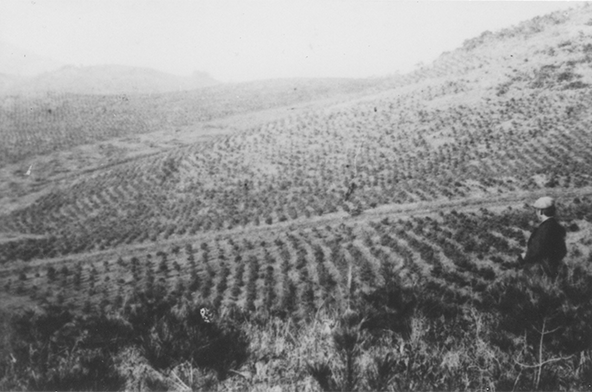
Improving an Area Covered in Volcanic Ash
The land was also improved at the same time. The highly acidic land distinctive of an area covered in volcanic ash was neutralized by employing the latest technique for the time of spraying lime on it. Together with this, culverts were installed to ensure drainage in the poorly draining wetlands to create an environment suitable for growing crops. These infrastructure improvements continued for several decades after. The mountain forests and green pastures extending out at Koiwai Farm today were created through the accumulation of such tireless efforts.
Continuation of Difficulties
However, despite those efforts, it was still difficult to manage Koiwai Farm even several years after opening. There were a number of causes to the slowdown in business activity. The productivity of the land was low, and Masaru and the others lacked experience in farm management. Moreover, the distribution market for livestock products had still not yet developed at the time of the Meiji period (1868 to 1912).
- Built Head Office Warehouse No. 2(before 1898)
- Built Old Warehouse for the Cattle Rearing Department
1899
To Management by the Iwasaki Family
Even after retiring as Director-General of the Railway Agency, Masaru was extremely busy with his life work of the railway business. For instance, he worked hard to establish a train manufacturing company. Accordingly, he decided to let go of his farm business which had no prospects of improved management. The management of Koiwai Farm passed over from Masaru to the Iwasaki Family in 1899. At that time, Mitsubishi was led by Hisaya Iwasaki who was the eldest son of the founder Yataro Iwasaki. Hisaya was an animal lover and well-versed in raising crops and livestock. Under Hisaya, Koiwai Farm made new advances.
- Started breeding and improving livestock (breeding business)
- Started commercial sales of milk
- Started afforestation and reclamation on a full-scale basis
Started as a Breeder Aiming to Promote the Livestock Industry
1900
Late Meiji Period1901
- Imported Holstein cattle from the Netherlands, Ayrshire cattle from Great Britain and Brown Swiss cattle from Switzerland
1902
- Started commercial sales of butter
- Started horse breeding business
1903
- Built Head Office
1905
- Built Old Tillage Department Warehouse
- Built Natural Refrigerator
1907
- Built Silo No. 1 (right)
1908
- Built Head Office Warehouse No. 1
- Built Dent Corn Shack No. 2
- Built Cattle Barn No. 2
- Built Cattle Barn No. 4
- Built Silo No. 2 (left)
1914
- Built Clubhouse
1916
- Built Four-story Warehouse
- Built Dent Corn Shack No. 3
- Built Dent Corn Shack No. 4
1917
- Built Breeding Bull Barn
1929
- Built Dent Corn Shack No. 1
1934
- Built Cattle Barn No. 1
1935
- Built Cattle Barn No. 3
1936
- Built Stable for Riding Horses
- Built Weighing and Hoof Trimming Room
1938
- Established KOIWAI FARM, LTD
1949
- Ended horse breeding business
Diversification of business
1950
Mid Showa Period- Released farmland (Released 1,039 hectares by this year)
1962
- Started chicken breeding business on a full-scale basis
1967
- Started tourism business on a full-scale basis
1972
- Started greening engineering business
1976
- Spun off dairy industry business department and established Koiwai Dairy Products Co., Ltd. with joint investment from Kirin Brewery Company, Limited.
1977
- Established Koiwai Farm Service, Ltd.
1992
- Completed Tsurugadai Cowshed (large open-style milking cowshed)
1996
- Nine historical buildings became national registered tangible cultural properties
1998
- Started food production and sales on a full-scale basis
2000
Mid-Heisei period2001
- Obtained ISO14001
- Started a sweets factory
2002
- Obtained ISO9001 (Environment Greening Department)
-
Opened a directly managed restaurant in Tokyo Marunouchi Building
(now: KOIWAI FARM TOKYO)
2006
- Began operating the livestock biomass power generation facility of Biomass Power Shizukuishi Co., Ltd. which we established jointly with Shizukuishi Town, Mitsubishi Heavy Industries, Ltd. and other companies
2008
- Integrated food production and sales business with Koiwai Farm Service, Ltd. and renamed it Koiwai Farm Products, Ltd.
- Built the Milk Hall dairy processing facility in Koiwai Farm Makiba Park and started dairy processing sales business
2010
- Opened Koiwai Farm Ecute Tokyo in JR Tokyo Station
- Started Koiwai Farm Monogatari guided tours around areas of Koiwai Farm not open to the public
2011
- Started operating the Orient Café restaurant attached to the Oriental Library
2013
- Completed the new milking facility at Tsurugadai Cowshed
2015
- Received the Iwate Prefecture Merit Award
2017
- Established Koiwai Farm Dining Co., Ltd.
- 21 historical buildings became nationally designated important cultural properties
2020~
Reiwa〜- Integrated and reorganized Koiwai Farm Products, Ltd. into KOIWAI FARM, LTD’s milk processing and sales business (launched Food Production and Sales Division)
Production and Supply of Breeding Stock
Hisaya Iwasaki played a part in promoting industry as had been national policy since the early years of the Meiji period. He set the target of promoting the livestock industry to contribute to improving the physical condition of Japanese people. The management policy at that time was to primarily produce and supply breeding stock (breeding business) and to cultivate the crops to feed that breeding stock (cultivation of crops for livestock). We started selective breeding based on dairy cattle imported from countries such as the Netherlands. We then supplied breeding stock to breeding stock farms and ranches across Japan. That was the beginning of our livestock industry business which continues to this day. Koiwai Farm imported excellent breeding stock from overseas, performed selective breeding and then sold cows with outstanding lineage across Japan. In this way, we contributed to the development of dairy farming in Japan.
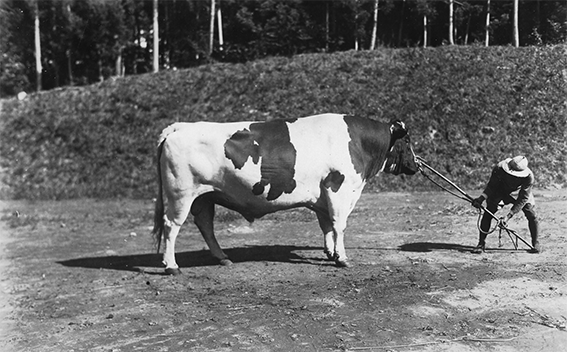
Sir Romeo Fayne: a breeding bull we imported in 1924
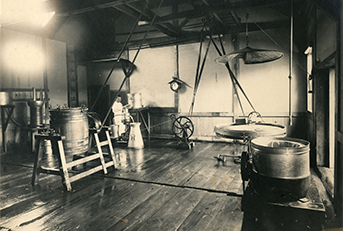
Leading the Dairy Industry Business in Japan
We cannot leave out fresh milk and the dairy products made from it when talking about Koiwai Farm. It was during this period that we began these as a business. We established technologies for manufacturing drinking milk, butter, and cheese. This contributed to the development of the dairy industry business in Japan.
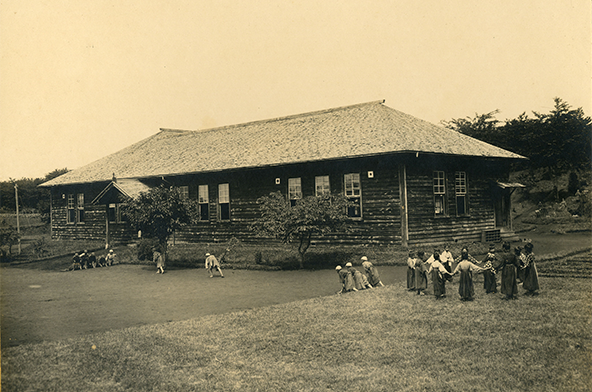
Koiwai Private Elementary School
Life on the Farm
(Koiwai Private Elementary School)
The number of farm workers and their children continued to increase as the operations of the farm expanded. To deal with this, Hisaya established a private elementary school called the Koiwai Private Elementary School in 1904. It was a rare farm-run elementary school in Japan until it became a public school in 1950. Many children of the employees graduated from the school. There were also more than a few graduates who worked on the farm for two or three generations. Hisaya himself had a deep interest in the elementary school. He would bring notebooks and other gifts for the children when he visited the farm.
Kenji Miyazawa and Koiwai Farm
Kenji Miyazawa was a literary figure fascinated by Koiwai Farm who cannot be left out of the story of the farm. Kenji loved the farm and the landscapes in its surroundings. He frequently took walks here. In particular, he introduced a walk he took here in May 1922 in a long poem called “Koiwai Noujou (Koiwai Farm)” in his poetry collection of Haru to Shura (An Asura in Spring.) Kenji is known for featuring the utopia of Ihatov based on his hometown in Iwate in his works. However, it may be that Koiwai Farm was the real-life Ihatov for Kenji. Furthermore, Kenji, who was a teacher at an agricultural school, also had a strong interest in soil improvement using lime on the farm.
Kenji Miyazawa
1896 - 1933
Kenji Miyazawa was a poet and children’s story writer who was born in Iwate Prefecture. He continued his creative endeavors while working as an agricultural instructor in Hanamaki. He has given the world children’s stories set in the utopia of Ihatov based on his hometown in Iwate and poems depicting the nature and peasant life of Iwate. Kenji is famous for his children’s stories including Ginga Tetsudo no Yoru (Night on the Galactic Railroad), Kaze no Matasaburo (The Boy of the Winds) and Chumon no Ooi Ryouriten (The Restaurant of Many Orders) as well as his poetry collection of An Asura in Spring. Koiwai Farm is depicted in his works such as “Oinomori to Zarumori, Nusutomori (Wolf Forest, Colander Fores, Thief Forest)” in The Restaurant of Many Orders and “Koiwai Farm” carried in An Asura in Spring.
Works Featuring Koiwai Farm
Children’s stories:“Wolf Forest, Colander Fores, Thief Forest,” “Okinagusa (Nodding Anemone)”
and “Kounbu no Tokei (Clock in the Farming Department)”
Poems:“Koiwai Farm,” “Akita Kaido (Akita Road),” “Ensoku Tousotsu (Excursion Commander),”
“Shunkoku Gyoga (Dawn in Spring Valley)” and “Haha ni Iu (I Talk to Mother)”
Literary poems:“Tatchu Hiji (Secret Affairs at the Tower)” and “Aoyagi Kyouyu wo Okuru
(Sending
Off Teacher Aoyagi)”
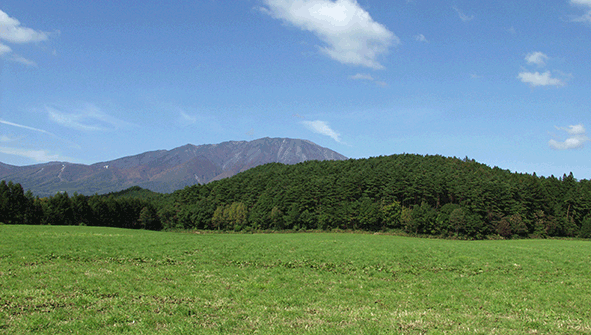
Oinomori (Wolf Forest): a forest which appears in the children’s story of “Wolf Forest, Colander Fores, Thief Forest”
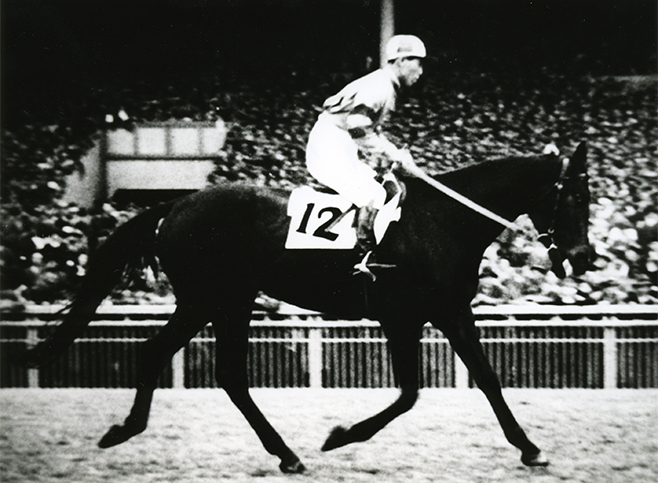
St. Light, produced at Koiwai Farm, becomes the first Triple Crown winner in Japan in 1941
Thoroughbred Production
In addition to the dairy cow breeding business, the horse breeding business focused on the production of racehorses supported the management of Koiwai Farm at that time. The racehorses of Koiwai Farm born from outstanding breeding stallions imported from Great Britain achieved brilliant results in the prewar horse racing world including winning the Japan Derby that was established in the early Showa period (1926 to 1989). The horseracing business came to an end after World War II. However, the bloodlines of the famous horses dispersed all across Japan from Koiwai Farm continue to produce many successful and excellent horses even today.
Expansion of Business in a Diversified Manner with a Focus on the Agriculture, Forestry and Livestock Industries
Koiwai Farm released approximately 1,000 hectares of farmland due to the GHQ’s occupation policy after World War II. Together with this, we abolished our horse breeding business that had been one of the important pillars of our management. That was a massive economic blow. Nevertheless, it also become an opportunity to take on the challenge of many other businesses later. Koiwai Farm developed business in a complex and diversified manner with a focus on the agriculture, forestry and livestock industries from the postwar period of economic revitalization to the subsequent period of rapid economic growth through to the current day.
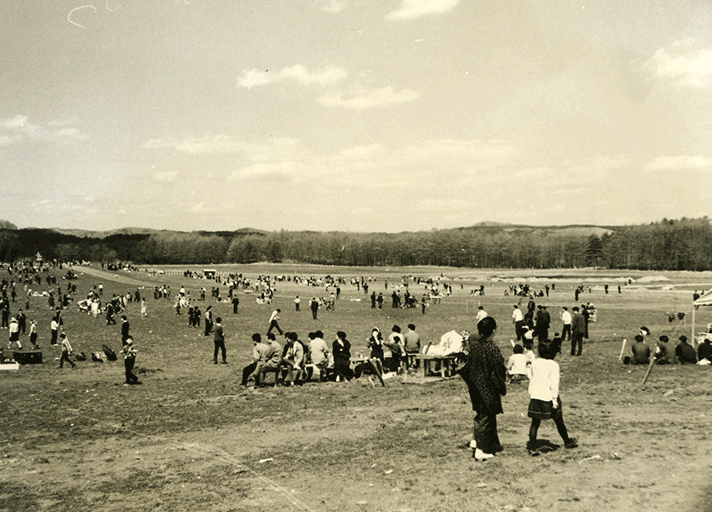
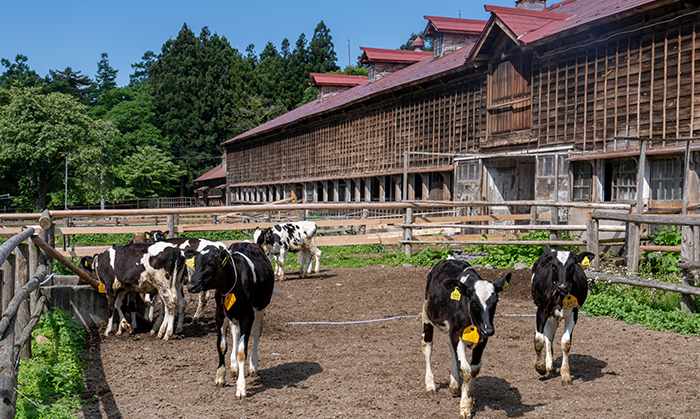
From the Breeding Business to Raw Milk Production
The dairy cow breeding and improvement business also underwent a dramatic change. We decided to focus our efforts on the production of raw milk by raising a large number of milking cows in place of the breeding business that had previously been the backbone of our operations for a long time in response to government-led changes in agricultural policy. We decided to expand into the manufacturing and sale of drinking milk, butter, cheese and other products on a full-scale basis. We spun off this business in 1976 and established Koiwai Dairy Products Co., Ltd. as a joint venture with Kirin Brewery Company, Limited.
Changes in the Forestry Industry
The forestry industry, which had become a pillar of the farm management in terms of earnings, switched to a policy of valuing environmental and landscape conversation and the multilateral functions of the mountain forests while retaining resources after the war. This switch was in response to the closure of a series of mines which had been major sources of demand and the sharp rise in foreign timber imports. The technologies we cultivated in the forestry industry would later lead us to the environmental greening engineering business.
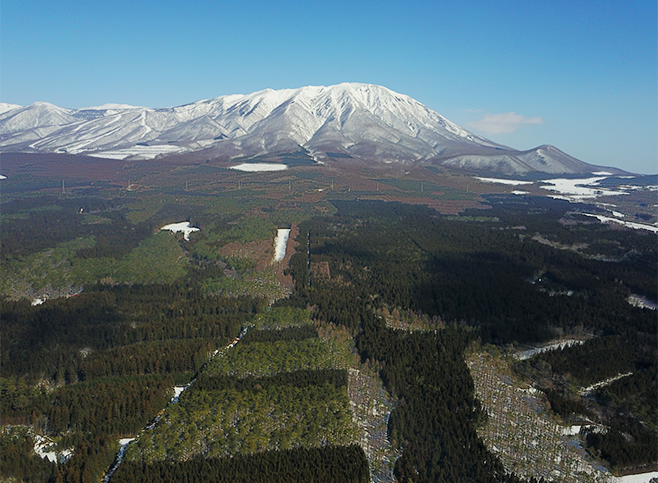
As a Place Where Green Culture Originated
We host guided tours to deepen understanding of the environment in the rich natural environment of Koiwai Farm. These tours allow participants to see the vast mountain forests and pastures that we have sustained through tireless efforts since our foundation, nationally designated important cultural properties and other historical buildings, and mountain forests, dairy farming and other production sites. These experiences allow the participants to encounter the true value built up by on our farm over many years.
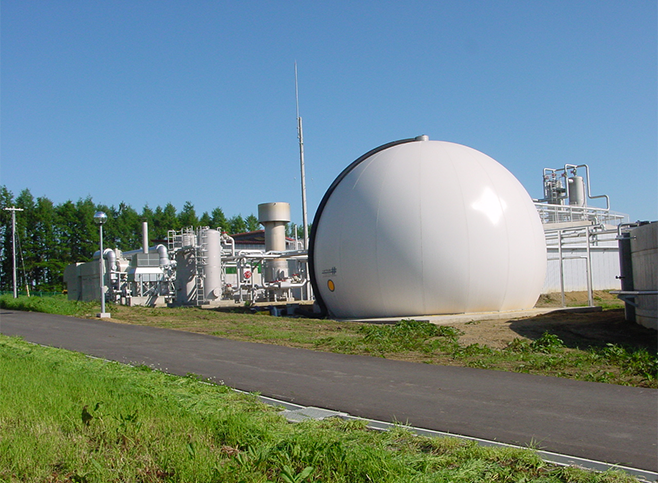
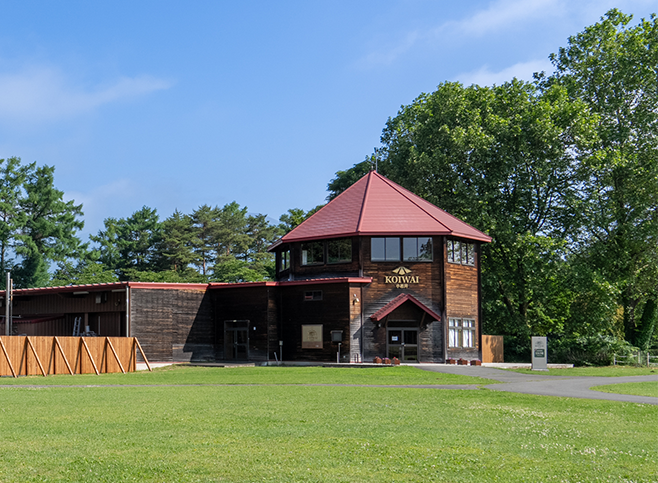
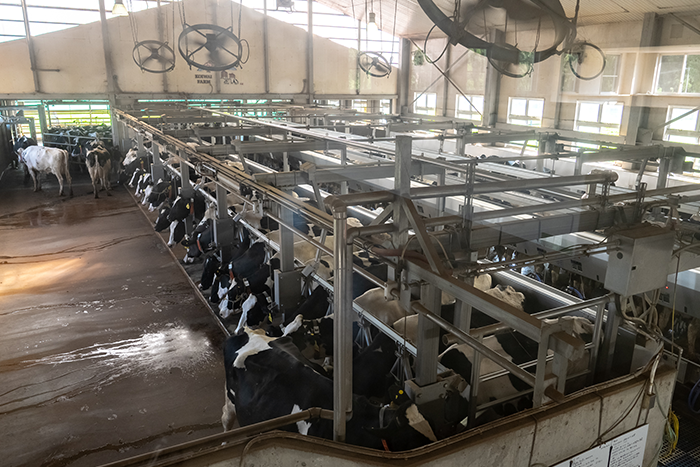
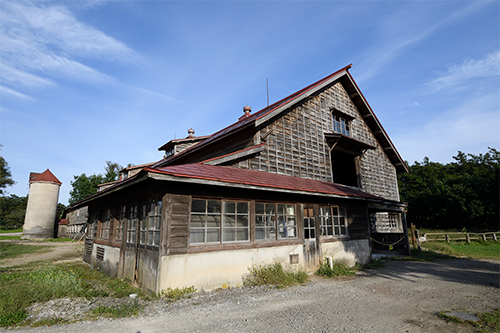
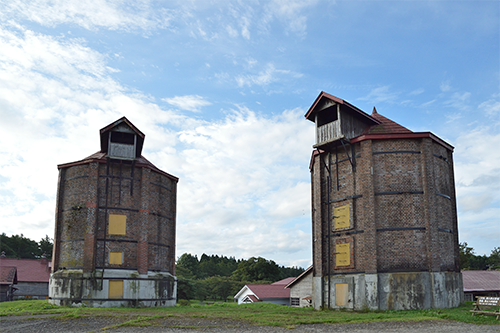
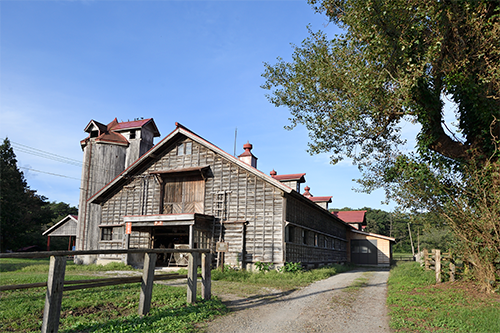
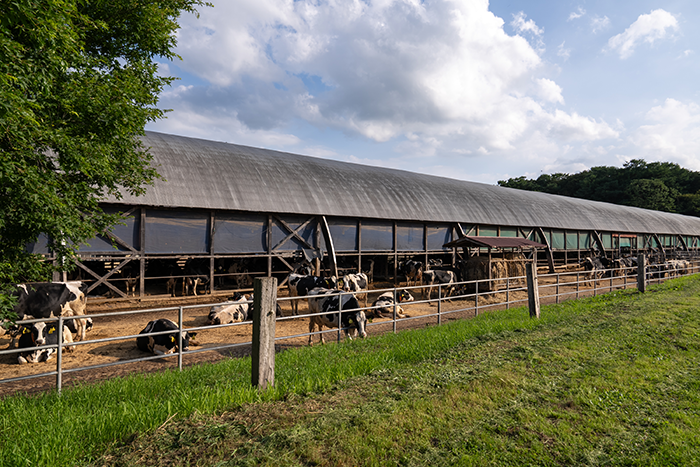
To the future
KOIWAI FARM, LTD, which operates Koiwai Farm,
has grown alongside the development of the industrial world in
Japan since our establishment in 1938.
The business environment has changed dramatically in recent years.
Against this backdrop, we have adopted diverse approaches and focused on new developments based on our track
record of achievements.
Moreover, each of our businesses, including dairy farming, mountain forests,
environmental greening, tourism and food products,
play a role more important than ever before in ensuring
our coexistence with nature.
We want to be a company which continues delivering happiness to our customers in the future.
